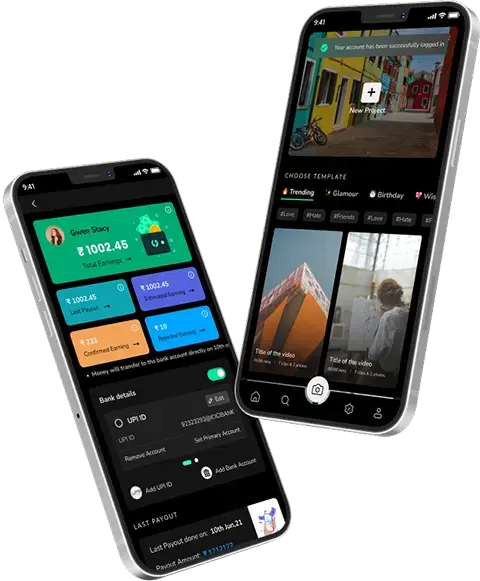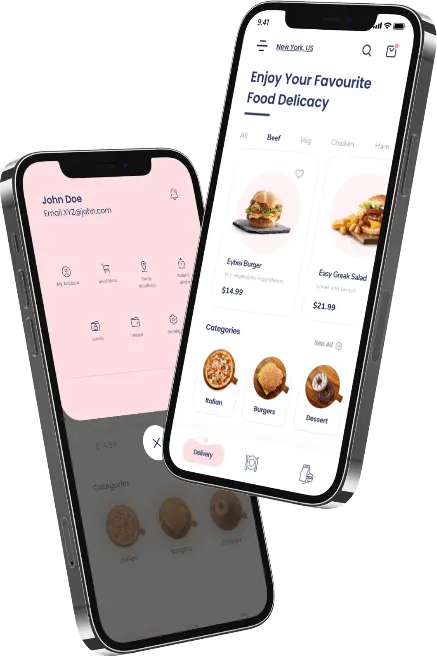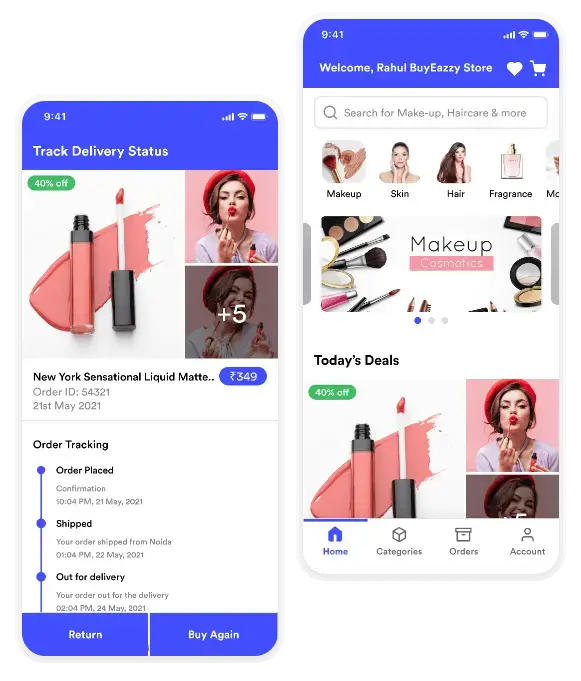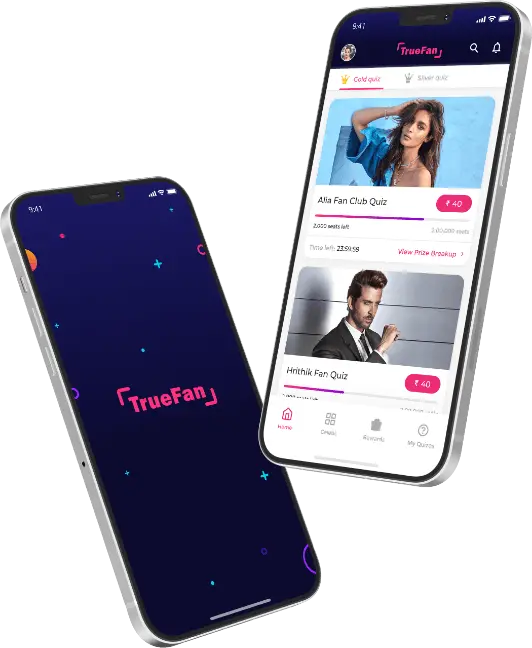Artificial Intelligence (AI) is transforming the way industries function, especially in healthcare. One of the most exciting advancements in this space is Google’s AMIE (Articulate Medical Intelligence Explorer). This AI-powered healthcare chatbot is setting new benchmarks with its ability to deliver medical insights, engage with patients, and support healthcare professionals in making diagnostic decisions.
Unlike traditional chatbots, AMIE combines deep learning, natural language processing (NLP), and real-time data interpretation to provide near-human accuracy in clinical scenarios. Developing a healthcare chatbot like Google’s AMIE could be a game-changer for healthcare organizations, enhancing efficiency, improving patient outcomes, and even reducing costs.
But what does it take to create something this advanced? And what is the cost to develop a chatbot like Google’s AMIE?
Let’s dive into what makes AMIE so powerful, the features your AI chatbot should include, the development process, and how much it will likely cost.
Understanding Google’s AMIE’s Role and Performance in Healthcare

Google’s AMIE is one of the latest innovations in healthcare AI. It uses advanced natural language processing (NLP) and machine learning (ML) algorithms to offer diagnostic support, assist with symptom assessment, and provide personalized treatment recommendations. The tool is designed to simulate conversations with patients, much like a primary care physician would, allowing users to engage in medical discussions, receive insights, and even schedule appointments.
AMIE is not just a chatbot; it’s a large language model (LLM) that has been trained using real-world healthcare data. This deep learning approach allows AMIE to understand medical terminology, offer valuable insights, and provide accurate responses to users’ queries.
AMIE vs. Primary Care Physicians: Simulated Success
Researchers at Google tested AMIE’s capabilities in a series of simulated diagnostic scenarios involving both the AI tool and real Primary Care Physicians (PCPs). The study showed that AMIE outperformed human doctors in several key areas, including diagnostic accuracy, response quality, and patient engagement.
In fact, AMIE exceeded expectations by providing more precise answers to medical questions and handling complex scenarios more effectively than the majority of the PCPs. This proves that AI-powered chatbots like AMIE could significantly enhance the quality of healthcare services, particularly in areas with limited access to medical professionals.
AMIE can:
- Interpret symptoms with clinical accuracy
- Provide diagnostic reasoning
- Recommend next steps (treatment, referral, etc.)
- Engage patients like a human physician
In tests conducted by Google, AMIE outperformed Primary Care Physicians (PCPs) in simulated diagnosis scenarios. It not only provided more accurate diagnoses but also ranked higher in patient engagement and communication quality.
For patients in underserved areas or for overburdened hospitals, AI chatbots like AMIE represent a major step toward accessible, efficient, and consistent healthcare support.
Factors Affecting AMIE-like Healthcare Chatbot Development Cost

The development cost of an AMIE-like chatbot is influenced by a variety of factors. While the costs typically range between $40,000 and $400,000 or more, depending on your project’s unique needs, here are some key elements that impact the price:
1. Features and Complexity
The complexity and feature set of the chatbot significantly impact its development cost. A basic healthcare chatbot may only handle a few simple tasks, such as answering common medical questions or scheduling appointments. However, a sophisticated system like AMIE integrates multiple advanced features, including diagnostic reasoning, natural language processing, and real-time consultations. Each of these features increases the time and resources required for development, thus raising the cost.
2. Integration with Healthcare Systems
An important aspect of any healthcare chatbot is its ability to integrate with existing healthcare systems, such as Electronic Health Records (EHR), Hospital Information Systems (HIS), and third-party APIs. These integrations are critical for ensuring the chatbot can access patient data and medical records to provide relevant information and accurate diagnostic insights.
Complex integration tasks and the need to meet strict regulatory standards (such as HIPAA in the U.S.) can significantly increase development costs.
3. Data Acquisition and Annotation
Training a machine learning model like AMIE requires vast amounts of medical data. Acquiring, cleaning, and annotating these datasets is time-consuming and expensive. Accessing medical data from reputable sources, labeling the data correctly, and ensuring it is free of errors requires expert knowledge. This can raise the cost of development, especially for large-scale, complex models.
4. Technological Stack
The choice of technology stack for building the chatbot plays a crucial role in the final cost. Advanced machine learning frameworks, cloud platforms (e.g., AWS, Google Cloud, Azure), and NLP models can incur significant costs, both in terms of licensing and infrastructure requirements. Additionally, the development tools and frameworks needed for building and scaling a sophisticated chatbot can further drive up expenses.
5. Regulatory Compliance
Healthcare applications must adhere to stringent regulatory standards like HIPAA in the U.S. or GDPR in Europe. Ensuring data privacy and security is crucial, and incorporating robust encryption, authentication, and audit trails adds an additional layer of complexity and cost.
6. Development Team
The development team is another major factor influencing the cost. Depending on the location, expertise, and experience of the developers, the hourly rates for a project can vary significantly. A team composed of machine learning engineers, NLP experts, medical consultants, and UI/UX designers is needed to create a high-quality product, and the rates for these specialists may vary depending on their skill set and geographic location.
Essential Features of an AMIE-like AI Chatbot for Healthcare

To build a chatbot similar to AMIE, you must consider integrating several key features that ensure its effectiveness, functionality, and ease of use. Here are the most important features:
1. Natural Language Processing (NLP)
NLP is crucial for enabling the chatbot to understand and process human language. It allows the system to interpret symptoms, respond to questions, and engage in natural conversations with users. The ability to handle complex medical terminology and user queries with high accuracy is vital for the chatbot’s success.
2. Symptom Assessment
A chatbot like AMIE can analyze symptoms provided by users and offer preliminary medical assessments. By guiding users through a structured questionnaire, the chatbot can help identify potential conditions, assess the severity of symptoms, and recommend next steps, such as seeking professional medical advice.
3. Personalized Treatment Recommendations
Based on symptom analysis and diagnostic results, the chatbot can deliver personalized treatment recommendations. These could include medication suggestions, lifestyle changes, or referrals to healthcare providers. Personalized care increases patient satisfaction and engagement.
4. Integration with Healthcare Systems
To improve the accuracy and utility of the chatbot, it needs to seamlessly integrate with Electronic Health Records (EHR) and other healthcare systems. This allows the chatbot to access patient data in real-time, providing more relevant advice and improving overall patient care.
5. Appointment Scheduling and Reminders
Scheduling medical appointments is a critical feature of a healthcare chatbot. By integrating with appointment scheduling systems, AMIE can help users book, cancel, or reschedule appointments and send reminders about upcoming consultations.
6. Medical Advice and Information
Chatbots can provide personalized advice based on users’ medical histories or questions. Whether it’s advice on managing a chronic illness, understanding symptoms, or learning about treatment options, this feature enhances patient engagement.
Also Read : Generative AI in Healthcare: Top Applications and Use Cases
7. Medication Management
Medication management is another valuable feature that can be included. AMIE-like chatbots can remind users to take medications, refilling prescriptions, or adjusting dosages. This can improve medication adherence and help prevent errors.
8. Security and Compliance
Given the sensitive nature of healthcare data, security and compliance are non-negotiable. Chatbots like AMIE must adhere to privacy regulations like HIPAA, ensuring that all medical data is encrypted, secure, and handled according to the latest standards.
9. Diagnostic Reasoning
The diagnostic reasoning feature helps AI chatbots offer accurate medical suggestions based on symptoms and medical data. This feature assists doctors in diagnosing conditions, especially in situations where remote consultations are needed.
10. Scalability and Cost Effectiveness
As the number of users grows, the chatbot should be able to handle increasing traffic without compromising performance. Ensuring scalability is key to managing healthcare costs and improving operational efficiency.
11. User Interface
A user-friendly interface is vital for patient engagement. The interface should be intuitive, easy to navigate, and responsive on various devices, such as smartphones, tablets, and desktops.
How to Create a Chatbot like AMIE for Healthcare?

Creating an AI healthcare chatbot like AMIE involves several crucial steps. Here’s a breakdown of the process:
1. Define Goals and Scope
Determine the main purpose of the chatbot, such as assisting with symptom checks, providing medical information, or scheduling appointments. Understanding the chatbot’s scope helps define its features and functionalities.
2. Choose the Technology Stack
Select technologies that align with your goals. This includes NLP frameworks, machine learning libraries, and cloud platforms. These technologies need to support your chatbot’s functionalities and ensure scalability.
3. Design UI/UX
Create an intuitive and engaging user interface (UI) that simplifies the interaction with complex medical data. Ensure that the user experience (UX) is responsive and accessible across different devices.
4. Develop Backend and Frontend
Develop the backend infrastructure for processing user inputs and managing data. The frontend should allow users to interact with the chatbot easily and navigate the app seamlessly.
5. Integrate with Healthcare Systems
To provide accurate and personalized recommendations, the chatbot needs to integrate with healthcare systems like EHR, HIS, and third-party APIs for accessing medical records and patient data securely.
6. Train and Test the Chatbot
Train the chatbot using diverse medical datasets and test it for performance and accuracy. Ensure that the chatbot provides reliable medical advice and offers a satisfactory user experience.
7. Deploy and Monitor
Once the chatbot is ready, deploy it across various platforms like web, iOS, and Android. Monitor the chatbot’s performance and gather feedback to refine and improve its capabilities.
8. Post-Launch Support and Maintenance
Providing ongoing maintenance and support is essential to ensure the chatbot continues to function effectively. Regular updates, security patches, and new feature releases should be part of the post-launch strategy.
Conclusion: Revolutionizing Healthcare with AI Chatbots like AMIE

Healthcare chatbots like Google’s AMIE have immense potential to transform how patients interact with medical professionals, access information, and manage their health. From 24/7 patient support to personalized treatment recommendations, AI-powered chatbots are reshaping the landscape of patient care.
The cost to develop a chatbot like AMIE will vary depending on factors such as features, integration complexity, technology stack, and regulatory compliance. However, businesses that invest in creating such advanced solutions stand to benefit from better patient engagement, improved diagnostic support, and a more streamlined healthcare experience.
Partnering with a reliable mobile app development company can ensure that your AI healthcare chatbot is developed efficiently, meets industry standards, and remains scalable to accommodate future growth.
Get in touch with Techugo to know more about the chatbot app development!
Post Views: 765




 SA
SA
 KW
KW
 IE
IE AU
AU UAE
UAE UK
UK USA
USA
 CA
CA DE
DE
 QA
QA ZA
ZA
 BH
BH NL
NL
 MU
MU FR
FR






























